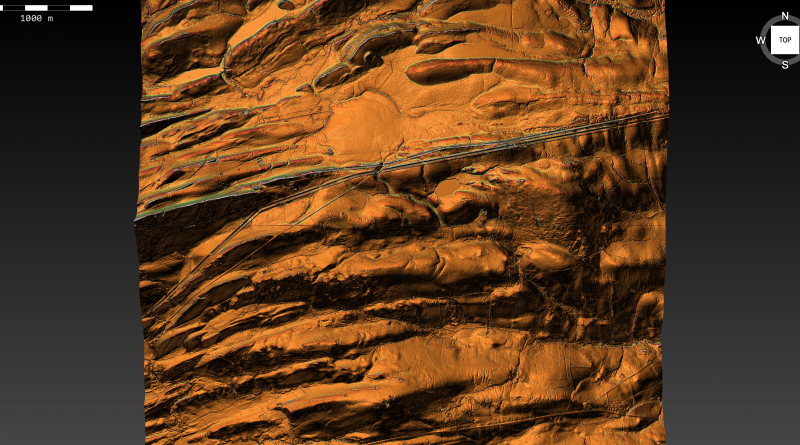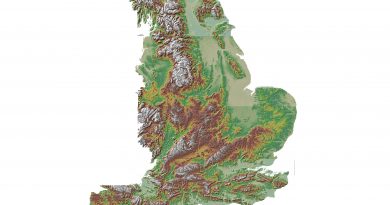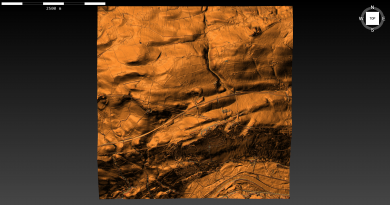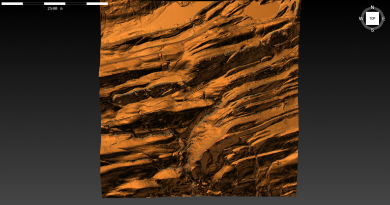Section M – NY87SW & NY86NW
Contents
Section M – NY87SW & NY86NW – this is a section of Hadrian’s Wall showing the LiDAR, Google Earth and 1800 Maps of the Area covered by Historic England
Historic England Sections:
Name: Name: Hadrian’s Wall and vallum between the field boundary at Brown Dikes and Coventina’s Well in wall miles 29, 30, 31, 32, 33 and 34
List UID: 1010963, 1010962, 1015914, 1010961
Old OS Map
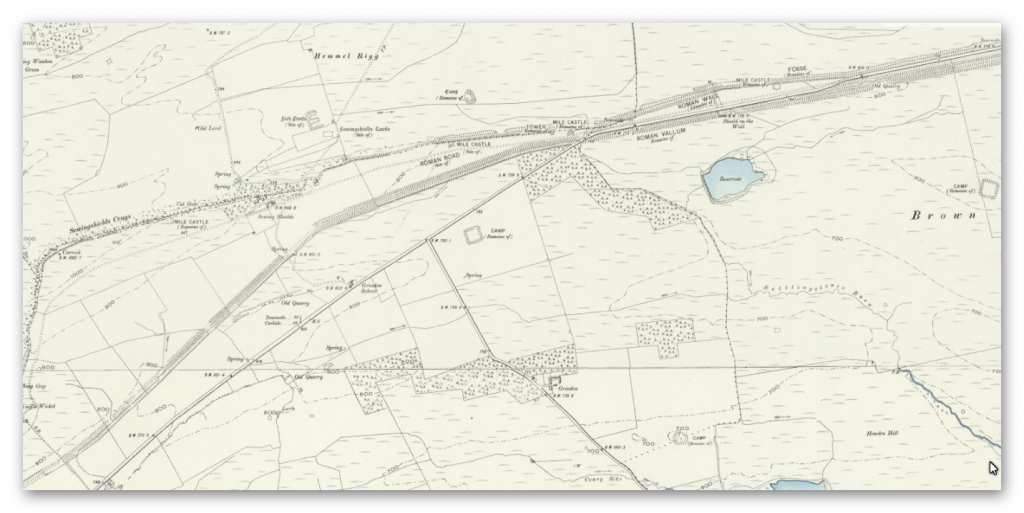
LiDAR Map
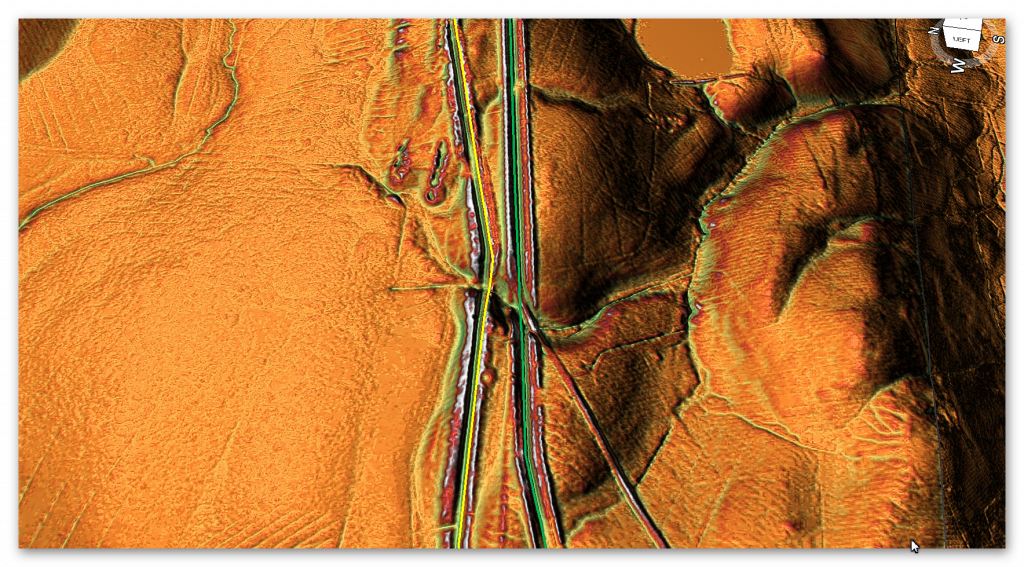
Google Earth Map
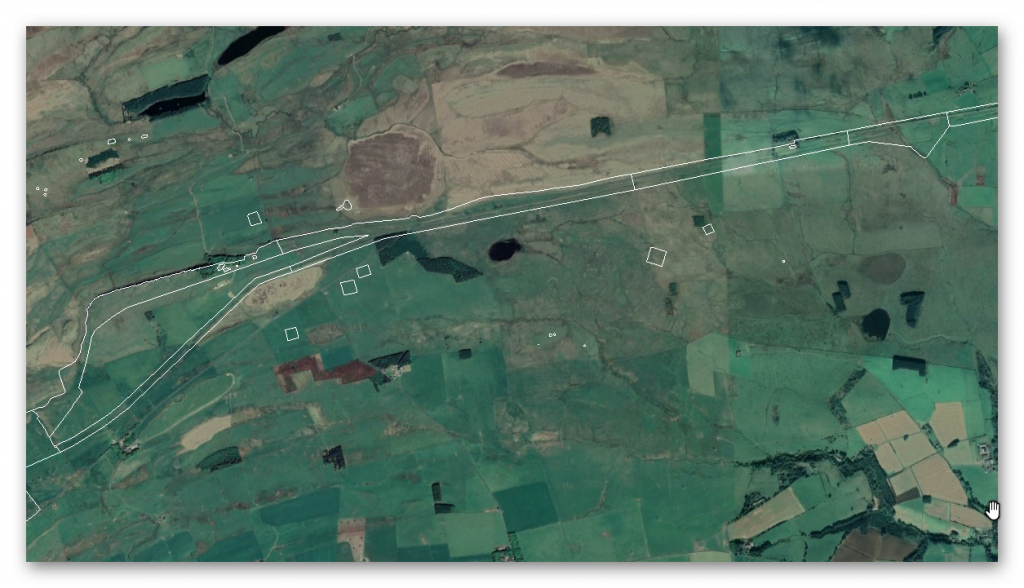
Historic England Scheduled Monuments within Section M
Name: Hadrian’s Wall and vallum between the field boundary at Brown Dikes and the field boundary east of turret 34a in wall miles 32, 33 and 34
Designation Type: Scheduling
Grade: Not Applicable to this List Entry
List UID: 1010963
Name: Hadrian’s Wall and vallum between the field boundary west of Coventina’s Well and the field boundary at Brown Dikes in wall miles 31 and 32
Designation Type: Scheduling
Grade: Not Applicable to this List Entry
List UID: 1010962
Name: Carrawburgh Roman fort and Hadrian’s Wall and vallum between the field boundary east of the fort and the field boundary west of Coventina’s Well in wall mile 31
Designation Type: Scheduling
Grade: Not Applicable to this List Entry
List UID: 1015914
Name: Hadrian’s Wall and vallum between the road to Simonburn and the field boundary east of Carrawburgh car park in wall miles 29, 30 and 31
Designation Type: Scheduling
Grade: Not Applicable to this List Entry
List UID: 1010961
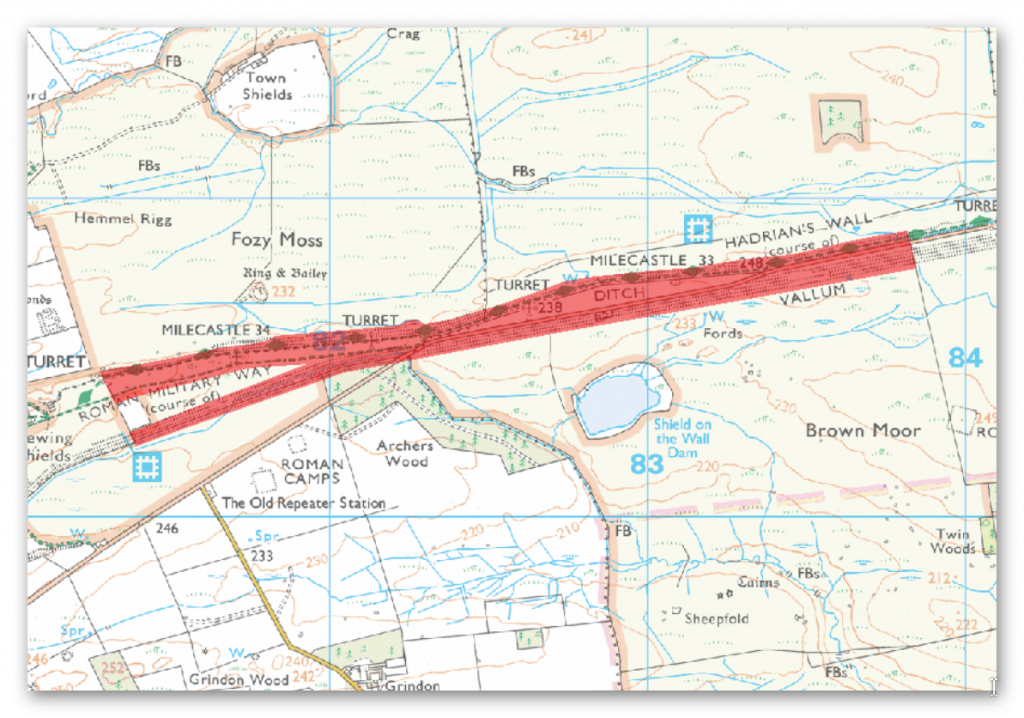
The monument includes the section of Hadrian’s Wall, vallum and their associated features between the field boundary at Brown Dikes in the east and the field boundary east of turret 34a in the west.
This section occupies a predominantly level stretch of ground, except at the west end where the Wall occupies the escarpment of the Whin Sill. The upstanding remains of Hadrian’s Wall, the milecastle and the turrets from the drain west of turret 33a to the field boundary east of turret 34a are Listed Grade I. Hadrian’s Wall survives as a series of upstanding and buried features throughout this section. It survives as a buried feature beneath the B6318 road at the east end of this section. Immediately east of milecastle 33 and beyond to the west end of this section the Wall survives either as a low turf covered bank, averaging 0.4m high, or as a series of robber trenches up to 0.4m deep. The north Wall-face west of the gateway of milecastle 33 is exposed for 16.7m. This unconsolidated stretch of upstanding wall reaches a maximum height of 1.5m. Either side of turret 33b the Wall is exposed and consolidated for a total length of 15.1m. Here the Wall measures 1.95m wide and has a maximum height of 1m.
The wall ditch and its associated upcast mound, known as the glacis, survive well in this section as a series of earthworks. In the east part of this section the ditch survives to an average depth of 3m while the glacis attains a maximum height of 2.7m in places. Beyond turret 33b the ditch is cut partly into the bedrock. It measures up to 13m in width and 2.2m in depth. The glacis here is seen intermittently as an irregular spread over the craggy scarp. Milecastle 33 at Shield on the Wall survives mostly as a turf covered platform visible on the ground. The north gateway and parts of the north wall are exposed as upstanding masonry up to 1.2m in height. Fragments of the south gateway are also exposed. It was partly excavated during 1884 by Clayton. Milecastle 34 is located within a small walled plantation about 430m east of turret 34a. It survives as a buried feature beneath the walls of the plantation and the wooded interior. It was noted by the antiquarian Horsley in this location during the 1730s. Milecastle 34 is in the care of the Secretary of State together with the length of wall, wall ditch and vallum to the east, as far as the point where the B6318 road crosses the vallum ditch. To the west of the milecastle the Wall alone is in the care of the Secretary of State to the end of this monument. The precise location of turret 32b has not yet been confirmed. However, on the basis of the usual spacing, it is expected to lie about 450m east of milecastle 33. As with turret 32b the precise location of turret 33a has not yet been identified. On the basis of the usual spacing it is expected to lie about 450m west of milecastle 33. Turret 33b survives well as an upstanding feature. It is consolidated and in the care of the Secretary of State. It was first located by Simpson in 1913. It measures 3.95m east-west by 3.9m north-south. The walls are 0.9m thick and have a maximum height of 1.1m. The entrance was at the east end of the south wall, but this was subsequently blocked. The turret was excavated during 1968 and 1970 when it was found that its occupation had ceased before the end of the second century AD. The Wall had then been rebuilt across the turret recess.
The course of the Roman road known as the Military Way, which ran along the corridor between the Wall and the vallum linking the turrets, milecastles and forts, was carried on the north mound of the vallum in the east half of this section. Its buried remains survive below grassland east of milecastle 33, until the B6318 road coincides with the north mound of the vallum where it lies below the modern road surface.
South of turret 33b the Military Way leaves the north mound of the vallum and follows a course parallel to that of the Wall. Here it survives as a distinct linear mound up to 6m wide and up to 0.3m high. The vallum survives well as an upstanding earthwork visible on the ground throughout this section. It runs roughly parallel with the line of the Wall until south of turret 33b where it turns to the south west and follows the tail of the escarpment. In the east half of this section the vallum ditch averages 3.5m in depth, while the north and south mounds average 1.5m in height.
A number of crossings are still extant here at 42m intervals. West of milecastle 33 the ditch averages 2m in depth and the north and south mounds 1.2m in height. West of turret 33b the ditch is partly rock cut and reaches a maximum depth of 2.5m.
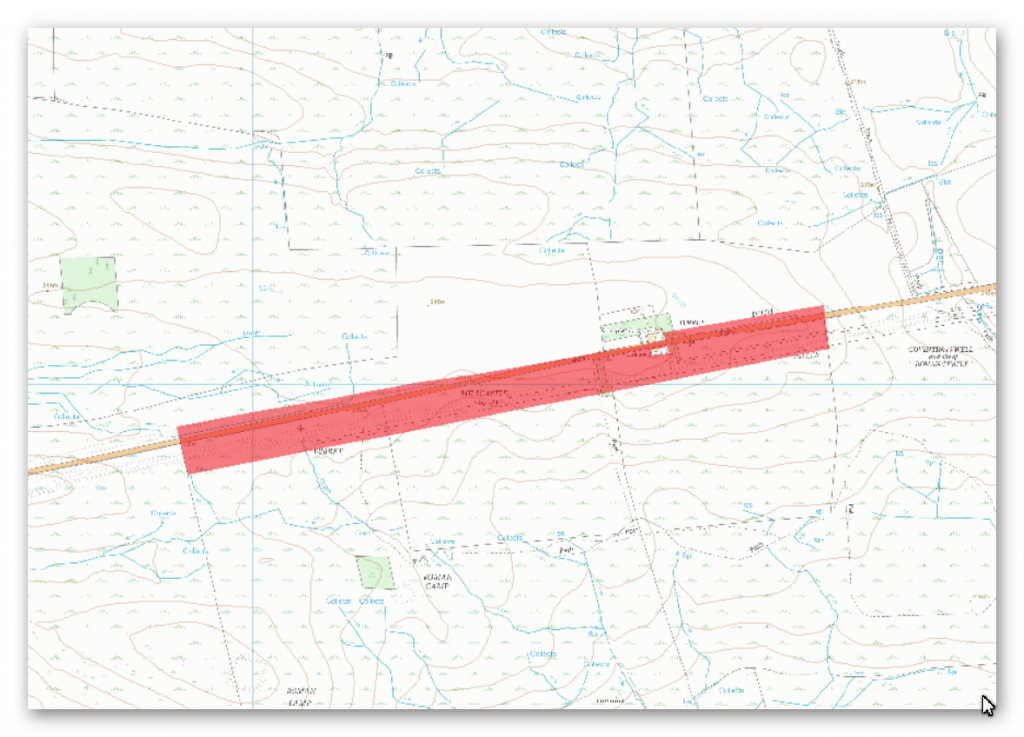
The monument includes the section of Hadrian’s Wall, vallum and their associated features between the field boundary west of Coventina’s Well in the east and the field boundary at Brown Dikes in the west.
This section occupies a gentle east facing slope with wide views to the north and south. Hadrian’s Wall survives as a buried feature throughout this section. East of Carraw Farm it is overlain by the modern field wall which defines the south side of the B6318 road. Here its line is visible as a disturbed grassy bank, 0.4m high, at the base of the modern wall. West of Carraw Farm its line is visible as a well defined robber trench, about 2m wide, beyond which it reappears as a slight scarp below the field wall which defines the south side of the road. West of here the Wall is overlain by the modern B6318 road. At Carraw Farm the survival of the remains of the Wall and wall ditch have not been confirmed. To the east and west of Carraw Farm the wall ditch is partly encroached on by the B6318 road.
However, it is visible to an average depth of 1.5m. The wall ditch is best preserved at the west end of this section where it reaches a depth of 3m. The upcast from the ditch, known as the glacis, survives intermittently as a mound to the north of the ditch. It is also best preserved at the west end of this section where it averages 1.4m in height. Milecastle 32 survives as a turf covered platform with robber trenches, 0.3m deep, defining the line of its east and west walls. The south wall is defined by a terrace, while the north wall is overlain by the field wall on the south side of the B6318 road. Limited excavation during 1971 recovered pottery which suggested occupation of the milecastle continued into the fourth century AD. Turret 31b is visible as a slight mound about 80m to the east of Carraw Farm. Its doorway was in the east side. Its remains are buried below the turf cover slightly to the south of the B6318 road. The precise location of turret 32a has not yet been confirmed. However, on the basis of the usual spacing, it is expected to be situated about 500m west of milecastle 32 under the surface of the B6318 road.
The course of the Roman road known as the Military Way, which ran along the corridor linking turrets, milecastles and forts is not yet known with certainty in this section. However, there is a slight rise alongside the field wall on the south side of the wooded area to the south of Carraw Farm which could be the remains of the `agger’, or raised spine, of the road. The antiquarian Horsley, writing in the 1730s, stated that the Military Way was carried on the north mound of the vallum in this general area.
The vallum is visible intermittently as an upstanding earthwork throughout this section. It is least well preserved at the east end where only the ditch is visible, having an average depth of 2m. West of milecastle 32 the earthworks are better preserved. The north mound is in good condition, reaching 1.5m in height, while the south mound at best reaches 0.9m. Here the ditch is waterlogged and silted, though it averages a depth of 1m.
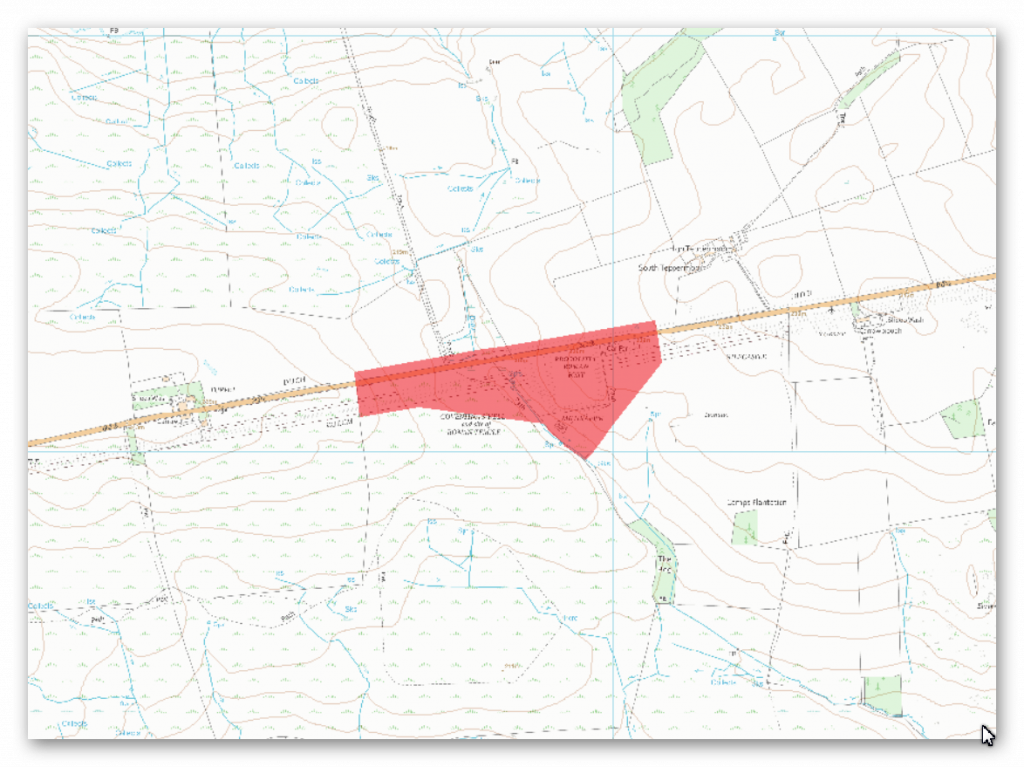
The monument includes the Roman fort at Carrawburgh and the section of Hadrian’s Wall between the field boundary east of Carrawburgh car park in the east and the field boundary west of Coventina’s Well in the west.
The upstanding remains of Hadrian’s Wall from the field boundary east of the fort to the road junction west of Coventina’s Well are Listed Grade I. This section of Wall is situated in the shallow dip occupied by Meggie’s Dene Burn. The Wall survives below the course of the B6318 road throughout this section. The wall ditch survives well as a visible earthwork on the north side of the road. It averages about 1m deep, though it attains a maximum depth of 3m in places. The upcast from the ditch, otherwise known as the glacis, survives well in this section as a broad low mound to the north of the ditch. The precise location of turret 31a has not yet been confirmed as there are no upstanding remains visible above ground. However, on the basis of the usual spacing it is expected to be located about 270m west of Carrawburgh fort, beneath the surface of the B6318 road.
The course of the Roman road known as the Military Way, which ran along the corridor between the Wall and vallum linking the turrets, milecastles and forts, is known for part of this section. It is visible as a low turf covered causeway immediately south of the car park heading directly for the east gate of the fort, though it fades before it reaches the fort. On the west side of the fort it re-emerges heading from the west gateway to the north mound of the vallum which was used to carry the road in this section. The road is visible as a low linear mound, 0.2m high, along the summit of the north mound of the vallum. The vallum survives as an intermittent earthwork throughout this section.
The vallum predates the fort at Carrawburgh as it was levelled to make way for the fort leaving no surface trace of the vallum in this area. To the west of the fort the vallum survives as a series of earthworks which have been reduced by later cultivation. The ditch averages 0.8m in depth, while the north mound of the vallum is visible as a low mound.
The fort at Carrawburgh, known to the Romans as Brocolitia, occupies a slight terrace on an otherwise gentle east facing slope, 650m west of the modern farm of Carrawbrough. The fields to the south and east of the fort are in the care of the Secretary of State. The fort is well preserved below the turf cover and its walls are believed to stand to around 1.5m in height. It measures 139.5m north-south by 109m east-west and encloses an area of 1.4ha. The defences consisted of a wall, 1.7m thick, backed by an earthen rampart with at least two external ditches in its earlier phases. Excavation of the headquarters building showed that the vallum had been levelled and its ditch filled in and the fort placed on top, demonstrating that the fort was added to the frontier system after the Wall and vallum had been constructed.
The fort was built for a cohort 500 strong, possibly part mounted. The civil settlement, or vicus, is located outside the fort to the south and west. It survives well as a series of earthworks and buried features. On the west side of the fort six terraces with scarps up to 2.1m high have been cut into the slope, parallel with the wall of the fort. Like the interior buildings of the fort, the stone buildings in the vicus have suffered from stone robbing. A bath house was discovered outside the fort and was excavated by Tailford on behalf of John Clayton during the 1870s. It had a layout similar to the Chesters bath house, though it was smaller in size. The excavation report indicates that it was radically reconstructed, probably during the fourth century AD. The location of the baths was not recorded in detail and so now its position is not known with certainty.
However, a platform to the south of the fort has been scooped out of a terrace close to the water level of the burn. The measurements of the bath house as excavated by Tailford would fit exactly into these earthworks. A paved road, 3.5m wide, was located in 1977 leading up to this platform from the burn. A shrine to a water-goddess known as Coventina was located and excavated by Tailford in the late 1870s. It was situated to the west of the fort at the source of a spring. The spring was encased in a rectangular stone basin about 2.6m by 2.4m. This basin was located at the centre of a walled enclosure, or temple, measuring 12.2m north-south by 11.6m east-west. A well, 2.1m deep and lined with masonry, is situated in the shrine. When excavated its contents included at least 13,487 coins, ten altars, a relief of three water-nymphs, the head of a male statue, two dedication slabs to the goddess Coventina, two clay incense burners and a wide range of votive offerings. Coventina’s Well can be seen enclosed by a fence to the west of the field wall on the west side of the fort. A temple to the god Mithras, more commonly known as a Mithraeum, was discovered during the dry summer of 1949. It was excavated in the following year by Richmond and Gillam. It has since been consolidated and is now displayed in its fourth century AD form, using cement replicas of the altars and statuettes and representations of interwoven timber wattle. It survives well as an upstanding stone structure, and is in the care of the Secretary of State.
The original altars and statuettes form part of a full size reconstruction of the temple located in the Museum of Antiquities at Newcastle Upon Tyne. When the Mithraeum was excavated Roman timbers were discovered in- situ due to the waterlogged conditions. Five phases of construction were able to be identified in the well preserved remains. Immediately outside the door of the Mithraeum was a small shrine now known as the `Temple of the Nymphs’. This feature was excavated during 1960 by Smith. Its remains included an altar, a spring/well, a paved area and an apsidal structure with a bench and short wing walls. This small temple was open to the sky. There are no upstanding remains visible on the surface except for the top of the north slab of the well-head. A cemetery is known to be situated on the east side of the fort. Lingard noted in 1807 that bones had been found between the fort and milecastle 31. Ten years later Hodgson learnt that urned cremations had been found during the quarrying to the east of the fort. Five tombstones have been recovered from Carrawburgh though their original positions are unknown. Excavations during 1964, in advance of the construction of the car park, revealed fragmentary remains of two buildings, one of which was identified as a small temple or funerary monument.
Investigation
The Vallum in this section changes course to follow the Wall alignment (or vice-versa?) The road that was constructed on the bank of the Vallum in the previous section – now branches out over the countryside separate to the vallum and then on this section again reconnects and the road is the one of the Vallum banks. Military way is seen to also connect to the same bank as the road suggesting that (the road) was also originally roman constructed after both the Vallum and Military Way?.
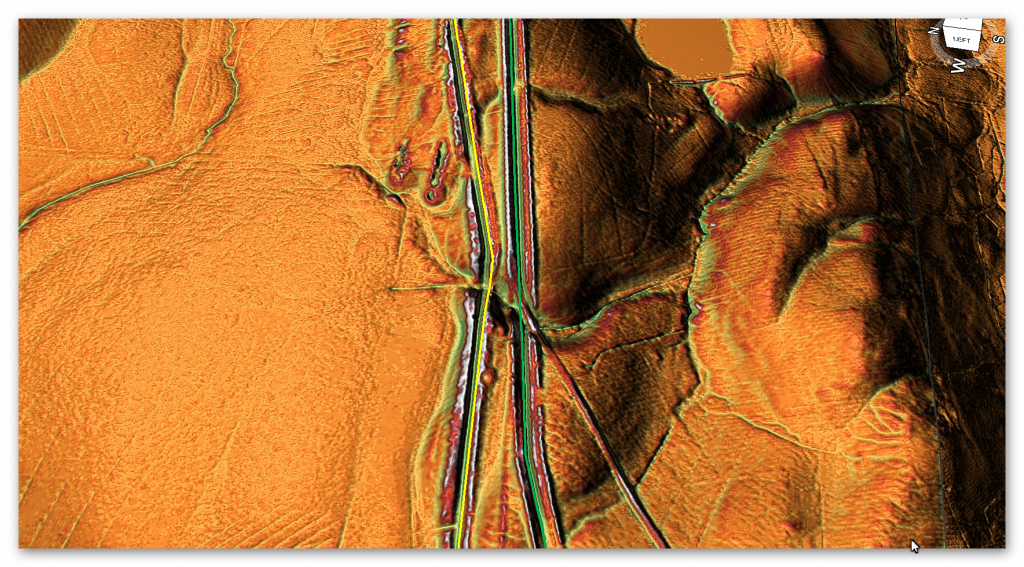
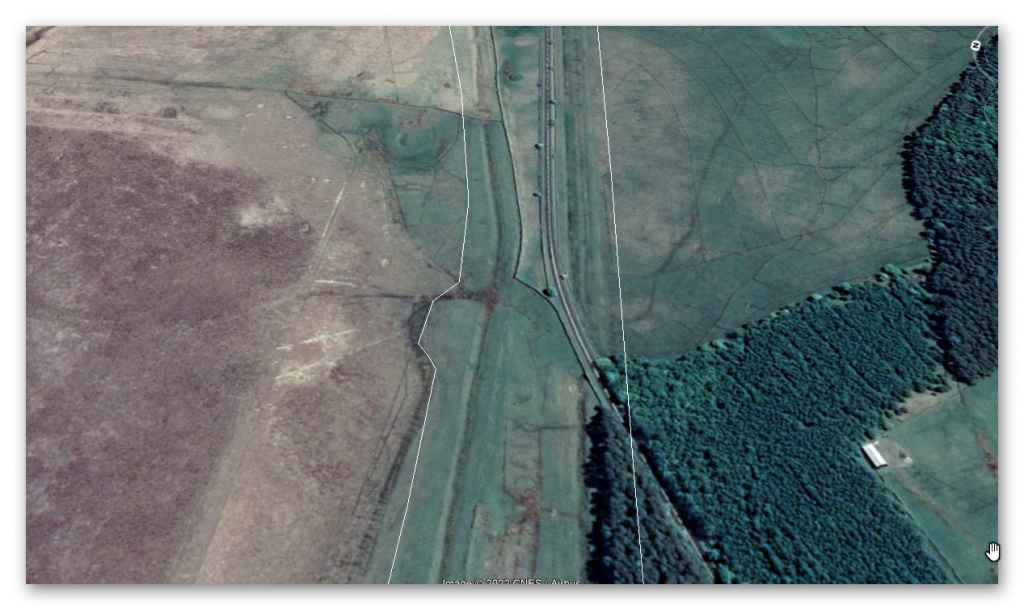
Another interesting feature is the location of the two ‘Roman temporary forts’ – these are not connected to any road system although they are close to the Wall and Vallum – but a paleochannel seems to connect both ‘forts’ but also runs from the Vallum. The larger camp is called ‘Brown Dikes’ – no doubt because it was on Brown’s moor and is connected to each other by a ‘dike’?
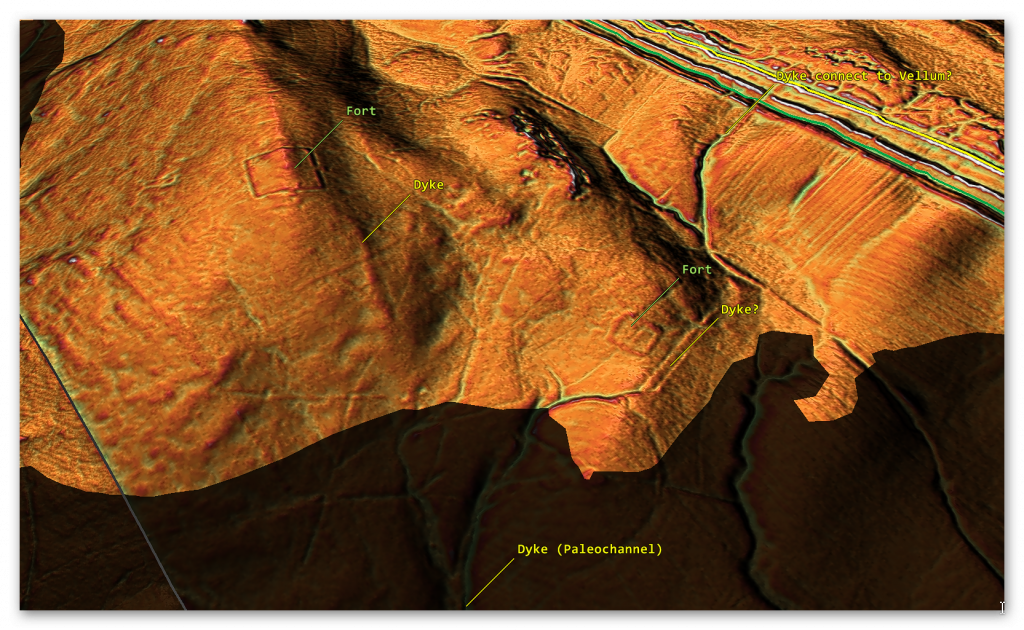
To understand the problem with Hadrian’s Walls history read our article HERE.
Further Reading
For information about British Prehistory, visit www.prehistoric-britain.co.uk for the most extensive archaeology blogs and investigations collection, including modern LiDAR reports. This site also includes extracts and articles from the Robert John Langdon Trilogy about Britain in the Prehistoric period, including titles such as The Stonehenge Enigma, Dawn of the Lost Civilisation and the ultimate proof of Post Glacial Flooding and the landscape we see today.
Robert John Langdon has also created a YouTube web channel with over 100 investigations and video documentaries to support his classic trilogy (Prehistoric Britain). He has also released a collection of strange coincidences that he calls ‘13 Things that Don’t Make Sense in History’ and his recent discovery of a lost Stone Avenue at Avebury in Wiltshire called ‘Silbury Avenue – the Lost Stone Avenue’.
Langdon has also produced a series of ‘shorts’, which are extracts from his main body of books:
For active discussions on the findings of the TRILOGY and recent LiDAR investigations that are published on our WEBSITE, you can join our and leave a message or join the debate on our Facebook Group.

